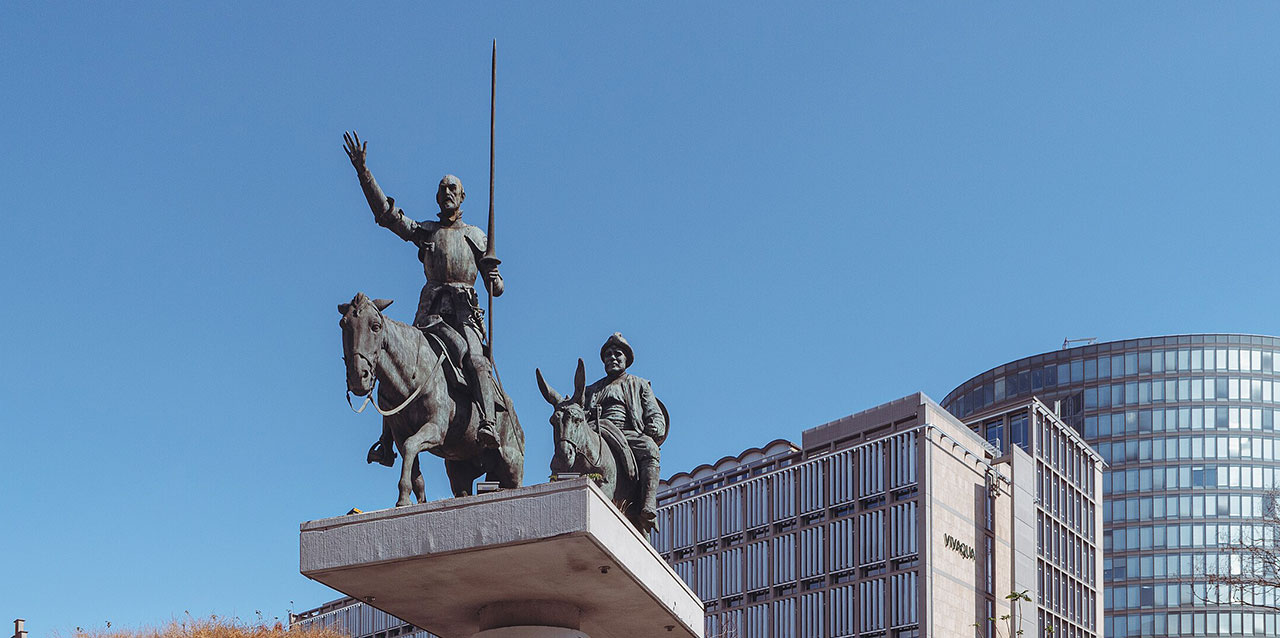Spain still struggles over interpretation of its Golden Age
LAWRENCE – At first blush, Spain seems like a solid nation. But as headlines about the Catalan independence movement and its exiled leader Carles Puigdemont show, the threat of dissolution is ever present. And, as such, all sides try to exploit the country’s literary legacy for their own benefit.

“If you want to understand the chaos of Spain, pay more attention to how they're using their classics, because that gives you a sense of the current state of things,” said Robert Bayliss, University of Kansas professor of Spanish and author of the new book “The Currency of Cultural Patrimony: The Spanish Golden Age” (Liverpool University Press).
The “currency” of the title refers both to the contemporary nature of the debates over Spanish nationalism and the money that governments and other institutions have spent over the past century promoting canonical works from the period just before and after 1600.
Bayliss looks at the history of three Golden Age texts — Lope de Vega’s 1619 play “Fuenteovejuna,” Miguel de Cervantes’ 1605-1615 novel “Don Quixote” and the legend of “El Cid” — exploring how each has been staged and seen throughout the modern era, and how that history, in turn, has affected the way they are viewed today.
“Don Quixote” is undoubtedly Spain’s urtext, Bayliss said. It’s why Spain sponsors Cervantes Institutes around the world to spread its culture and promote tourism.
The cumulative uses of these texts for centuries, the KU researcher said, continually add new meaning to them.
“It's like a snowball effect where it rolls down the hill and gets bigger and bigger,” Bayliss said. “Their reappearance in popular culture is especially worth examining during times in Spanish history marked by cultural crisis or calamity.
“When Spain finds itself in crisis, Spaniards are prompted to ask, ‘Who are we? Where do we find inspiration?’ This is when the classics become newly current, as they are engaged to provide answers. So ‘Don Quixote’ was used to stimulate tourism in the 1950s during Francisco Franco’s fascist regime, just as the character was engaged to inspire Spaniards after the Spanish-American War in 1898. So we have all these texts written about how he's an allegory for the Spanish nation, and he's fighting the windmills of the Industrial Revolution, or communism, or whatever the case may be at the time.”
The meanings impressed upon Lope de Vega’s play “Fuenteovejuna” and the legend of “El Cid” are somewhat more contested, in Bayliss’ telling.
The KU researcher sketches the historical roots of the knight/prince Rodrigo Díaz de Vivar, (1043-1099) known as El Cid, following as he is transformed from 12th century ballad to Golden Age play to the 1961 Hollywood blockbuster “El Cid” starring Charlton Heston to the 2003 animated film “El Cid: La Leyenda” (The Legend).
This last iteration, Bayliss notes, was not only affected by its proximity to the 9/11 terror attacks, the subsequent U.S. invasion of Iraq, and the Spanish socialist backlash against that, but also the Heston movie.
Thus, he writes, the film “re-codes an already (geo)politically re-coded narrative, through a discursive re-coding of one midcentury Hollywood genre (Hollywood Epic) through the lens of another (Disney).”
He continues: “The upshot of how this film might inform debates on immigration from Northern Africa is clear enough: While good, Spanish Muslims contribute to the nation’s cultural strength and diversity, the bad foreign Muslim power is an Other whose exclusion should motivate policy reforms.”
Bayliss writes that Vega’s “Fuenteovejuna ... dramatizes the medieval uprising of a rural village against its tyrannical and sexually predatory Comendador,” or knight/commander. He said it “makes the small town into an allegory for national civil strife.”
The book explores how, during the reign of Franco, his supporters were able to find support for their version of the essentially Spanish national character in “Fuenteovejuna.” Then the author covers the reaction against that interpretation (and that of Golden Age literature as a whole) in the democratic period that followed, starting in the late 1970s.
Bayliss said Lope de Vega remains adaptable to the present moment, as a 2023 staging of his play “La Villana de Getafe” (“The Old Woman Villager of Getafe”) in the town of that name near Madrid proved. City leaders from the culturally conservative Vox Party objected.
“There were headlines,” Bayliss said, “to the effect of, ‘They canceled the Lope de Vega play for having a huge sculpture of penis and a vagina on stage.’ It was some sort of avant-garde interpretation with a lot of surrealist sexual innuendo blown up in everybody's face, and so they decided that was too scandalous and they canceled it. Others said, 'How can you censor this most Spanish of playwrights?' So it was a case in point of how Golden Age texts end up in the middle of all these culture wars.”
Bayliss writes that he expects that to continue: “Amid these cultural-narrative twists and turns, references to the Spanish Golden Age remain a reliable constant.”